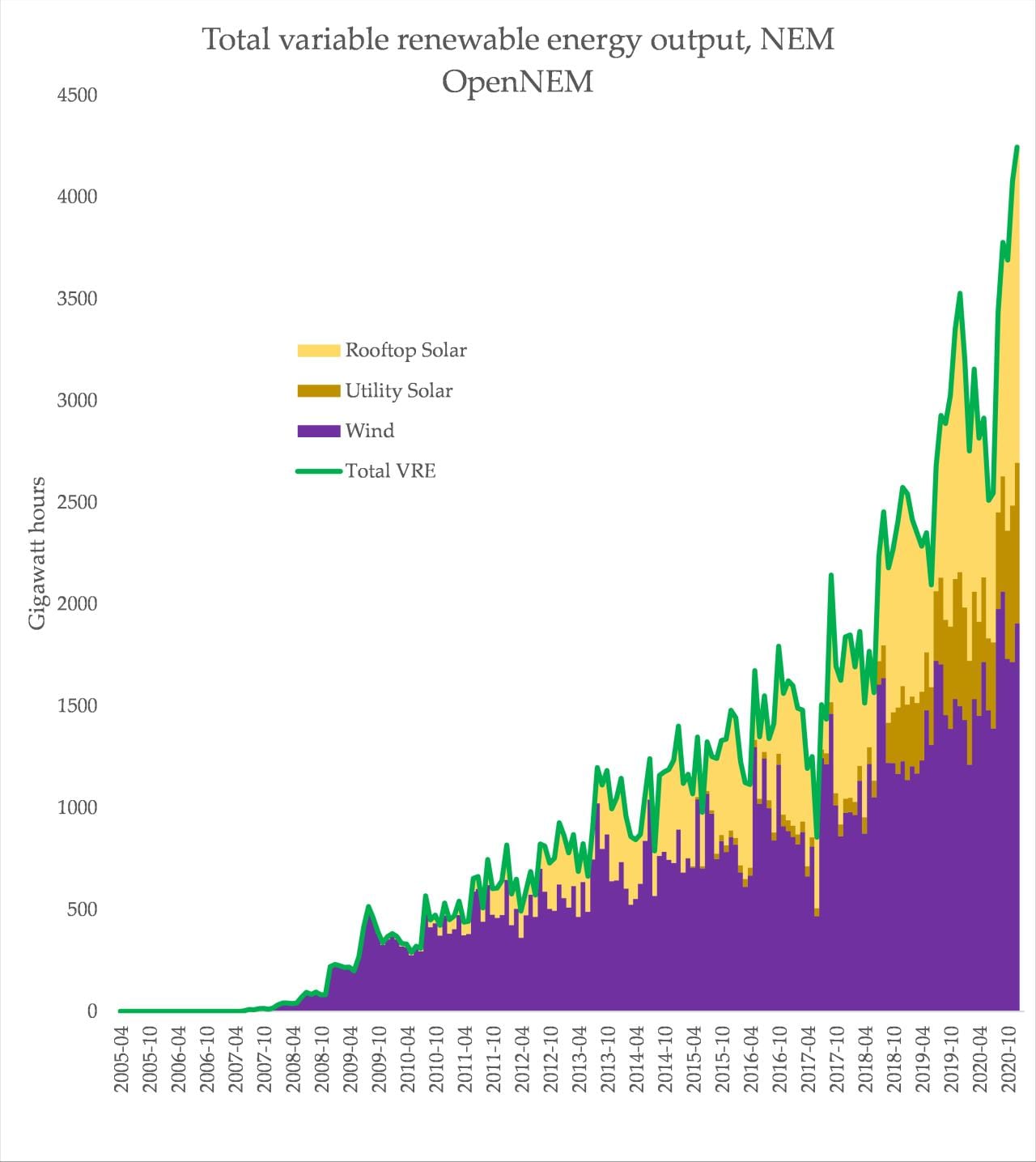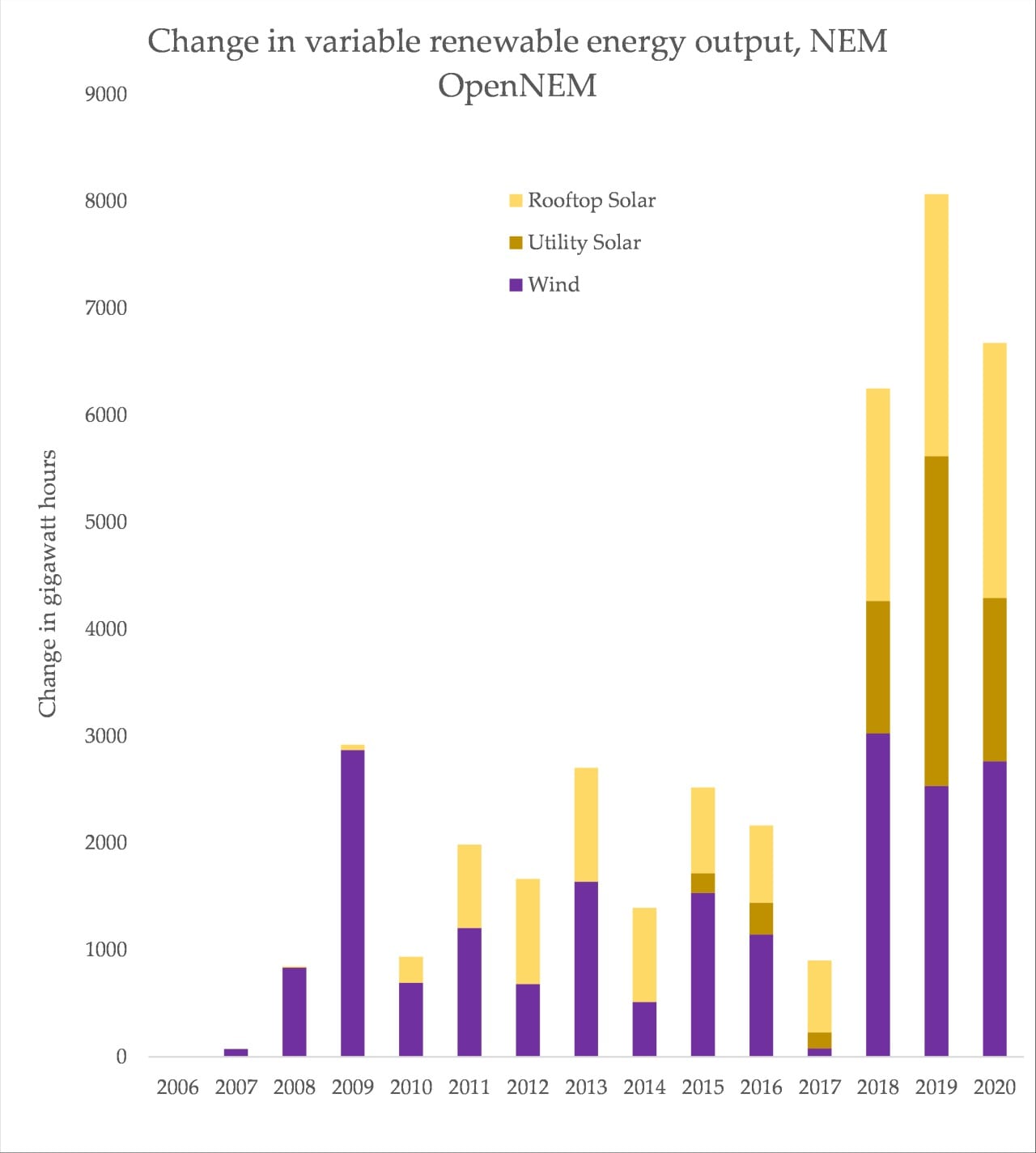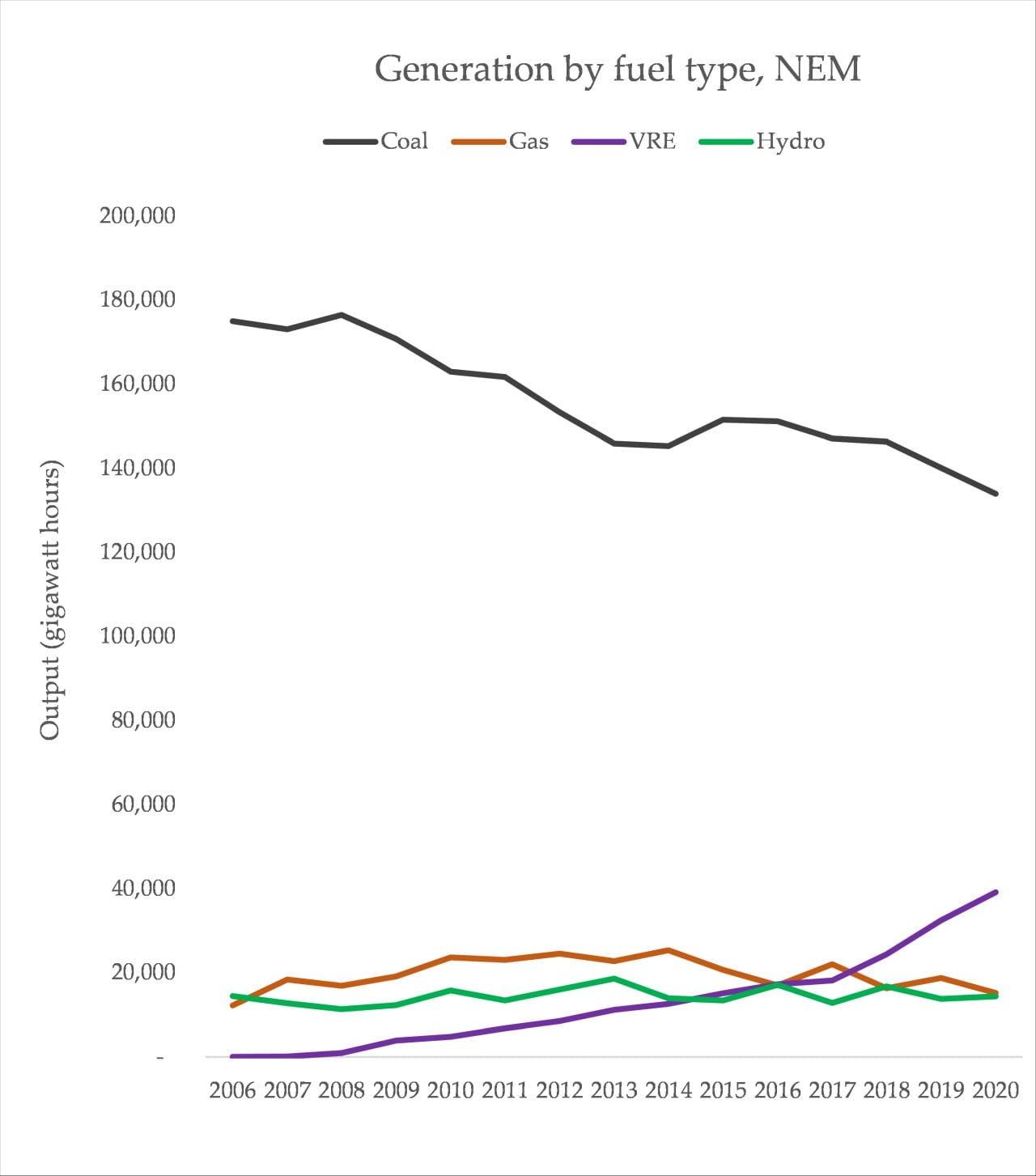Now that 2020 has wrapped up, we can begin looking into some key facts and stats from the year. The most rapidly updated is the data from Australia’s National Electricity Market, or NEM. Here are three key takeaways from a preliminary look at Australia’s biggest grid. All data sourced from OpenNEM.
2020 was highest renewable year on record, and December was the highest month
Of the top 10 months on record for VRE output, 2020 had seven of them. 2020 was just a wildly significant year for renewable energy in Australia’s NEM, with the growth in total renewable energy output between 2019 and 2020 the second highest on record.
Rooftop solar has become a key driver of new renewable energy
2018, 2019 and 2020 have all been massive years of growth, with rooftop solar driving much of the growth across the years. It’s likely that the winding up of the renewable energy target scheme has played a large part in this. Whether it can be maintained over the coming years will depend heavily on federal leadership and consequently, investor certainty. It will also depend on the realisation of the various state renewable schemes.
October 2020 was the lowest emissions month for the NEM, ever
Unsurprisingly, 2020 was also the lowest emissions month on record. This was not due to a lack of demand – 202,146 gigawatt hours of energy was consumed in 2020, roughly the same as 2007, 2012 and 2016. No: renewable energy drove this.
No, gas didn’t do this
As we’ve written before, the output of gas has been steadily decreasing, as the output of wind and solar rise to fill the gap left by the coal that’s closing. 2020 was, in fact, the second lowest year of output for gas-fired power on the NEM, second only to 2006. October 2020 was the lowest coal output on record too. There’s a long way to go, but this progress is valuable.












